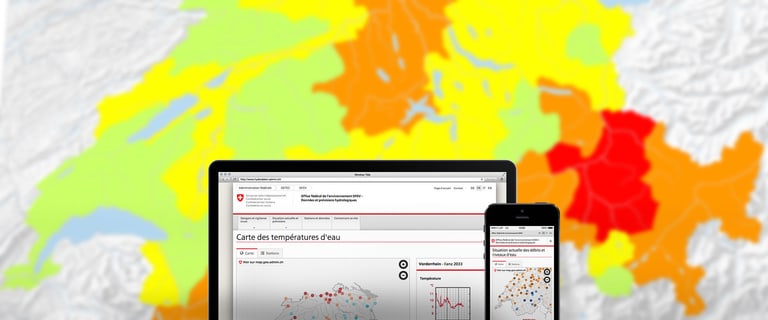The Federal Office for the Environment has a nationwide network of monitoring stations that busily collect various kinds of hydrological data in real time. The main challenge in the Hydroweb project was bundling these multiple datasets and transforming them into practical and easy-to-understand information. The Liip team therefore began by analysing each individual data source before combining them to generate a unified view. In addition to a new look, additional data and monitoring stations have been integrated into the new platform.
However, there was more to the project that data analysis. A key component was building a platform that makes the most of the wealth of fascinating information in the FOEN’s possession and shares it with a wider public. The result is Hydroweb, the new informative, fresh and user-friendly FOEN website. Take the new format for flood warnings, for instance. The relevant data are continually analysed and displayed, and the information bundled together and displayed in a clear and accessible way. All flood warnings are localised automatically and displayed in real time.
Crisis-proof implementation
The application is designed to withstand a massive surge in visitor numbers in the event of an elevated risk of flooding. To prevent the website from crashing, every 10 minutes 1,500 static HTML pages can be created that use the latest monitoring data and hazard warnings. This process takes no more than two minutes. The dynamic open source programming languages Ruby and JavaScript, and HTML were used to program the app. JavaScript framework D3 is used to render the real-time graphics.
Testimonial
«That a simple data display can be based on a complex data structure was an entirely new, and exciting, discovery for me.»
Yves Bertrand, Product Owner
Client
Federal Office for the Environment
Result
Hydroweb [bafu]

